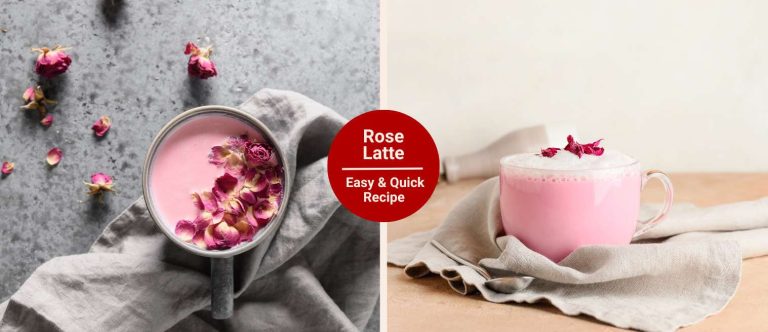How to Make Cafezinho (Easy & Quick Brazilian Recipe)
Have you ever been handed a tiny cup of coffee that feels like a warm hug?
I have this Brazilian friend and every time I visit his place; he enthusiastically insists that I try his special Cafezinho.
I’ll be honest: I’ve never really been into sweet coffee. I usually take mine in bold and black (that’s why I love ristretto). But the first time I sipped that little cup, something clicked.
It was rich, smooth, and sweet. However, not in an overpowering way and had this homemade comfort vibe that’s hard to describe.
After a few visits (and a few more Cafezinhos), I started paying attention to how he made it. And the great part is that it’s less about the gear and more about the process.
In this guide, you’ll learn how to make Cafezinho the traditional Brazilian way. I’ll cover everything from what it is to the necessary tools and ingredients and simple steps to brew it at home (even if you’ve never used a cloth filter before). So let’s start brewing!
What Is Cafezinho?
Cafezinho (which means “little coffee” in Portuguese) is strong, sweet, and served in small doses, almost like an espresso shot.
But here’s the twist: it’s sweetened while brewing, not after. For this reason, the flavor ends up smoother and more balanced than you’d expect.
The texture is rich and not heavy. And because it’s brewed slowly, often using a cloth filter called a coador. As a result, you get a bold yet silky cup of Brazilian coffee.

Also, cafezinho is served without milk or cream. Basically, it’s just coffee, water and sugar working together.
Origins
Now, where does Cafezinho come from? It’s deeply rooted in Brazilian culture. I haven’t been to Brazil yet, but I have a friend whose family is from São Paulo, and they swear you can’t walk into a Brazilian home without being offered a tiny cup of this stuff.
From what I’ve learned, Cafezinho gained popularity because it was affordable, easy to make on the stovetop, and didn’t require any fancy espresso machines.

All you needed was a kettle, a cloth strainer, and some good Brazilian coffee grounds. Over time, it became something more meaningful—a gesture of hospitality, a way to pause and connect with someone.
Even in business meetings or visits to a friend’s place, Cafezinho is always part of it. Honestly, that made me love the drink even more. It’s not about caffeine; it’s about everything that surrounds it too.

How to Make Cafezinho (Step-by-Step)
Equipment
- Small Saucepan:
- Coador (cloth coffee strainer) or paper cone filter
- Heat source (stovetop or portable burner)
- Small espresso-style cups
Ingredients
- Ground Brazilian coffee (or any medium-dark roast)
- Filtered water
- Granulated sugar
- Optional: cinnamon stick or cardamom for a twist
Instructions
- Boil Water with Sugar: Start by adding sugar directly into your water about 1–2 teaspoons per serving. Bring it to a boil in a small saucepan. This creates a sweet, syrupy base that gives Cafezinho its signature flavor.
- Add Ground Coffee: Stir in 1 to 2 tablespoons of finely ground coffee for every 6 oz of water. Let it steep for 30 seconds to 1 minute, but don’t overdo it—you want bold, not bitter. A gentle stir helps blend everything evenly.
- Strain and Serve: Pour the coffee mixture slowly through your coador or a cone filter into your serving cup. It should come out smooth, slightly thick, and deeply aromatic. No cream is needed—Cafezinho is always served in black and sweet.
Video
Notes
Pro Tip from a Brazilian Friend
Before brewing, rinse your cloth filter with hot water. It warms things up and helps remove any leftover flavors from previous brews. It’s a small step, but it makes your Cafezinho cleaner and more vibrant.Tips for the Best Cafezinho at Home
Over the years, I’ve picked up a few tips. If you want to brew a cup that feels like it came straight from a kitchen in São Paulo, these little details matter.
1 – Use high-quality Brazilian coffee beans
The foundation of any good Cafezinho is the coffee itself. I personally love using Café do Ponto Tradicional or 3 Corações.

Both are medium to dark roasts that give you that rich, chocolatey bitterness Cafezinho is known for. You can usually find them online. For instance, Amazon stocks and Latin markets often carry them, too.
2 – Don’t skimp on sugar
Seriously, Cafezinho isn’t meant to be bitter or bland. The sugar is brewed with the water. So it mellows out the coffee and adds body to each sip.

Even if you’re someone who normally drinks black coffee, don’t skip this—it’s part of what makes it so good.
3 – Brew fresh and serve immediately
Cafezinho doesn’t sit well. Once it’s brewed, pour it right into the cup and drink it hot. You shouldn’t reheat or let it cool down, which tends to bring out more bitterness than flavor.

4 – Clean your coador often if using a cloth filter
I learned this the hard way. If you’re using a cloth filter (which gives the best flavor in my opinion), rinse it well with hot water after each use and let it dry fully. Otherwise, it can start to smell funky or affect the taste of your next brew.

Other Variations I Recommend
After you’ve nailed the basic version, there’s a bunch of fun ways to shake it up based on your mood or the season. I’ve tried all of these at least once, and none disappointed me.
Cafezinho com Leite
Just add a splash of milk. It softens the bitterness and gives it a smoother, more café-au-lait vibe. I usually reach for this one in the afternoon when I want something warm but not too bold. Whole milk or even oat milk works great.

Spiced Cafezinho
Brew it with a cinnamon stick or a tiny pinch of clove. This one gives off major cozy vibes, especially during cooler months. One of my Brazilian friends does this around the holidays, and now I do too.
Iced Cafezinho
Chill your brew and pour it over ice for a refreshing version in the summer. I’ll sometimes brew it stronger than usual, so it doesn’t water down with the ice.
Cafezinho Cocktail
This one’s a late-night treat. Just mix your strong sweetened coffee with a shot of cachaça or dark rum. Then shake it with ice, strain, and get yourself a Brazilian-style espresso martini.
Last Thoughts
Have you tried making Cafezinho at home? Did you add your own twist or stick to the traditional way? I’d like to read your questions or tips in the comments.
Questions? We Have Answers.
Get answers to a list of the most Frequently Asked Questions.







